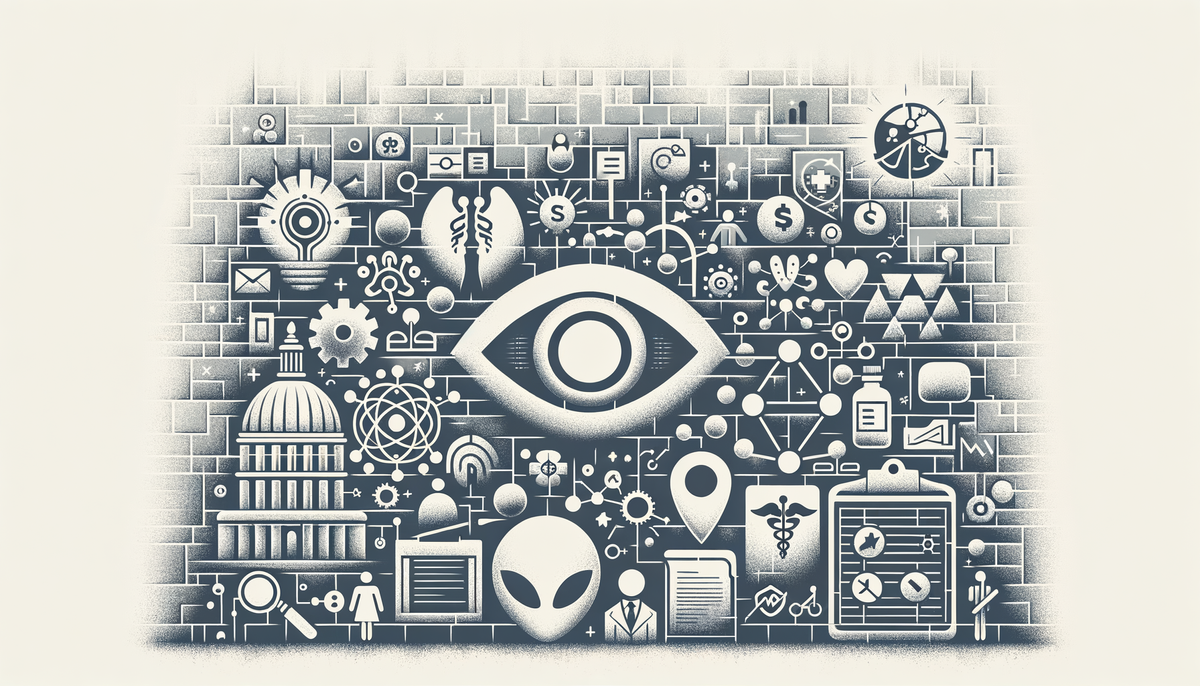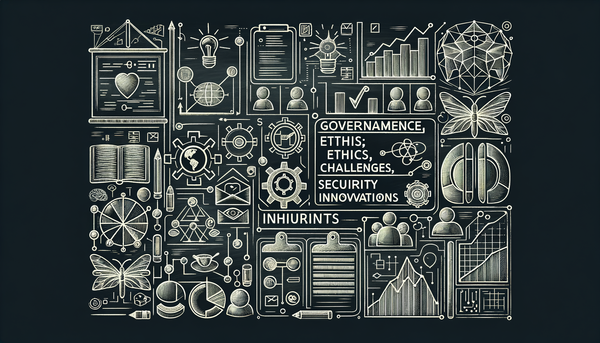Transformative Power of AI in Today's World

Senate debates over AI chip sales, breakthroughs in healthcare, and thriving innovation hubs reveal that artificial intelligence is no longer a distant futuristic vision but a transformative force impacting policy, industry, and daily life today.
Policy Debates and Global Implications
The decision by the administration to resume AI chip sales to China has sparked significant controversy and concern among Senate Democrats. Lawmakers are apprehensive that easing restrictions on chip exports could inadvertently contribute to technological advancements in rival nations and shift the balance of power in the global AI race. This issue illustrates the delicate interplay between national security, economic strategy, and technological innovation – a discussion that remains at the forefront of many governing bodies worldwide.
In a similar vein, discussions about AI often traverse beyond just innovation to encompass questions of international competitiveness and ethics. The Senate Committee on Banking, Housing, and Urban Affairs is watching closely as developments like these influence both domestic policy and international trade dynamics. Such debates underscore the importance of carefully balancing open technological progress with security and regulatory oversight.
This evolving discussion invites us to consider the broader implications of AI trade policies. For further perspectives on how political and legal battles are shaping the technology landscape, you might also explore the insights shared in our legal and technological showdowns update on AI.Biz.
Transformative Impact on Healthcare
Beyond policy, AI’s influence is reshaping how we approach critical healthcare challenges. Evidence drawn from global research highlights the significant impact of artificial intelligence on reducing maternal mortality, a pressing issue in both developed and developing countries. New AI-driven diagnostic tools and data analysis methodologies are paving the way for earlier, more accurate interventions. For example, predictive models can assess and flag high-risk pregnancies, leading to timely and potentially life-saving treatments.
Such applications represent the kind of transformative change that technology can facilitate when paired with healthcare expertise. This progress also brings to light the ethical considerations necessary when implementing AI in life-critical systems. As we witness the convergence of AI and medicine, it is vital for policy makers and practitioners alike to continually reassess the frameworks that guide these innovations.
Emphasizing the human angle, the integration of AI into healthcare can be viewed as a tool not to replace, but to enhance medical expertise. As one expert once said,
“Some people call this artificial intelligence, but the reality is this technology will enhance us. So instead of artificial intelligence, I think we’ll augment our intelligence.”
This perspective underscores the hopeful future where technology plays a supportive role in saving lives.
Cost-Effective Innovations and the Rise of Low-Cost Models
The landscape of AI is also witnessing a surge in cost-effective innovations, exemplified by China’s newest AI model, which is being offered at a significantly lower cost than industry stalwarts such as DeepSeek. This development not only democratizes access to AI capabilities but also fuels competitive pressures among developers worldwide.
Lower costs can stimulate large-scale adoption, sparking a virtuous cycle where economies of scale and incremental improvements drive further innovation. Such models may empower emerging markets and smaller enterprises to explore AI-driven solutions that were previously inaccessible due to high costs. In turn, this assists in globalizing the benefits of AI technology while spurring further competition and creativity in the field.
This trend calls to mind the remarkable journey of many disruptive technologies: starting as costly, exclusive breakthroughs before maturing into widespread tools that redefine industries.
Enhancing Consumer Experience Through AI
Artificial intelligence is revolutionizing the way consumers interact with digital products and retail environments. A prime example comes from the latest update in Google Chrome, which now features AI-powered store summaries. This new functionality helps U.S. shoppers quickly grasp key highlights of online stores, streamlining the customer journey while enhancing decision-making processes.
Meanwhile, notable shifts in the eyewear industry are also emerging. EssilorLuxottica recently reported a 7.3% revenue rise in H1, attributing part of their success to the integration of AI in smart glasses. By harnessing AI technologies, these glasses are not merely fashion accessories but functional wearables that support a range of activities—from augmented reality experiences to improved visual health diagnostics.
Both examples illustrate how AI is deeply embedding itself into everyday tools to deliver efficiency and improved user experiences. Curious shoppers and tech enthusiasts should feel inspired to explore these innovations and even test out AI-enhanced products for themselves.
For more on how these consumer-centric innovations are shaping business strategies, our coverage on industry transformations within AI on AI.Biz offers in-depth discussion and case studies.
Ethical and Legal Challenges in AI Training
While the benefits of AI are extensive, some approaches to developing these technologies have drawn legal scrutiny and raised ethical red flags. A recent lawsuit against Meta alleges that the company used pirated content, including adult material, to train its AI models over an extended period. This case has ignited conversations about the acceptable boundaries of data sourcing and the intellectual property rights of original content creators.
Situations like these highlight a critical tension within the AI community: the need to balance rapid technological progress with the adherence to legal and ethical standards. The adaptation of unsanctioned data inputs, even if unintended, complicates the narrative of AI being an entirely beneficial tool. As colonial-era adages remind us, innovation untempered by ethical oversight may lead to unintended consequences.
Legal experts and technologists advocate for the development of robust guidelines that ensure fairness and respect for creator rights, while still enabling groundbreaking advancements in AI. These discussions underscore the importance of transparency and ethical deliberation in shaping a future where technology upholds both progress and protective governance.
Cultural Resonance and the Uncharted Territories of AI
Sometimes, the realm of AI ventures into the unexpected intersections with popular culture. One such provocative idea involves using AI technology to "revive" iconic actors. A notable example is the wild plan proposed by the co-star from the film "Mrs. Doubtfire" to recreate Robin Williams through advanced AI techniques. Although the proposition has evoked both awe and ethical concerns, it unequivocally demonstrates AI's reach into cultural legacy and memory.
This blend of technology with nostalgia stirs a mix of excitement and caution. While the potential to digitally recreate cherished personalities may seem like a tribute to their artistic contributions, it also raises pivotal questions about consent, authenticity, and the meaning of legacy in the digital era.
The interplay of technology and culture opens intriguing dialogues on how we memorialize influential figures—reminding us that while technology may be able to mimic human traits, the essence of human creativity and emotion remains uniquely profound.
Leadership, Innovation Hubs, and Strategic Appointments
The organizational dimension of AI is also undergoing significant transformation as industry leaders reposition themselves in the new digital landscape. Recently, former Pentagon Chief Data and Artificial Intelligence Officer Radha Plumb has taken on an AI transformation role at IBM. Her appointment signifies a broader trend where professionals with defense and strategic backgrounds are increasingly influencing the direction of commercial AI development.
Additionally, a recent report has spotlighted Houston as a "star" metro for artificial intelligence innovation. This designation not only recognizes the city's growing technological ecosystem but also underscores the local investments in infrastructure and talent that are critical for nurturing AI enterprises. Such initiatives create an environment where industry can flourish, collaborating seamlessly with academic research and policy makers.
These strategic appointments and regional accolades remind us that leadership and infrastructure are as integral to the AI revolution as the technology itself. To learn more about similar leadership stories and industry updates, consider visiting our post on the exciting developments in AI on AI.Biz.
Realizing Visions: AI Dreams and Pragmatic Progress
The narrative of artificial intelligence is not solely confined to breakthroughs and debates; it is also a story of dreams materializing into palpable reality. In the thought-provoking report “AI Dreams Meets the Real World,” experts at the American Enterprise Institute explore how visionary ideas are steadily transforming into tangible, everyday applications.
From revolutionizing retail with subtle digital nudges to transforming healthcare with predictive diagnostics, AI is incrementally weaving itself into the fabric of modern life. The journey of such technology echoes historical transformations where ambitious dreams, once considered fantasy, evolve into indispensable tools that redefine societal norms.
In appreciating these advances, one cannot help but reflect on Fei-Fei Li’s candid observation:
“AI is everywhere. It's not that big, scary thing in the future. AI is here with us.”
This quote encapsulates the essence of our times – a blend of relentless innovation intertwined with everyday application.
It is fascinating to witness how once nebulous ambitions now provide the backbone for robust and pragmatic advancements across multiple sectors, blurring the lines between visionary dreams and practical utility.
Synthesizing the Future of AI
As we navigate through political debates, groundbreaking medical applications, consumer-driven innovations, and ethical dilemmas, it becomes clear that artificial intelligence is no monolithic field but a vibrant tapestry of multiple disciplines. Each thread—from the policy level where lawmakers wrestle with export controls, to the frontier of digital immortality in the creative arts—offers unique insights into the transformative power of AI.
The integration of AI has not only disrupted traditional models in technology but has also fostered an environment ripe for creative collaboration and bold decision-making. By seamlessly interlinking research, business, and governance, the AI era promises a future where technology complements and enhances our innate capabilities.
For those passionate about understanding these multifaceted dynamics, the evolving narrative of AI provides countless opportunities for exploration, discussion, and even experimentation. From embracing AI in everyday consumer products to reassessing legal standards for data usage, the journey ahead is as challenging as it is exhilarating.
It is my sincere hope that as more voices join the conversation—from policymakers and healthcare professionals to tech enthusiasts and cultural commentators—we can collectively steer this transformative force towards outcomes that are ethically sound and broadly beneficial.
Further Readings and Insights
- Exploring the evolving landscape of artificial intelligence
- Latest trends in industry transformations powered by AI
- Insights into legal and technological challenges in the AI sector
- Up-to-date coverage on exciting developments in AI
A Final Thought
In an era where technology permeates every aspect of life, the story of artificial intelligence is a constantly unfolding narrative. With each innovation and challenge, we are reminded that the true power of AI lies not just in its ability to solve problems, but in its capacity to inspire dreams, redefine boundaries, and ultimately, connect us in the quest for a brighter future.




